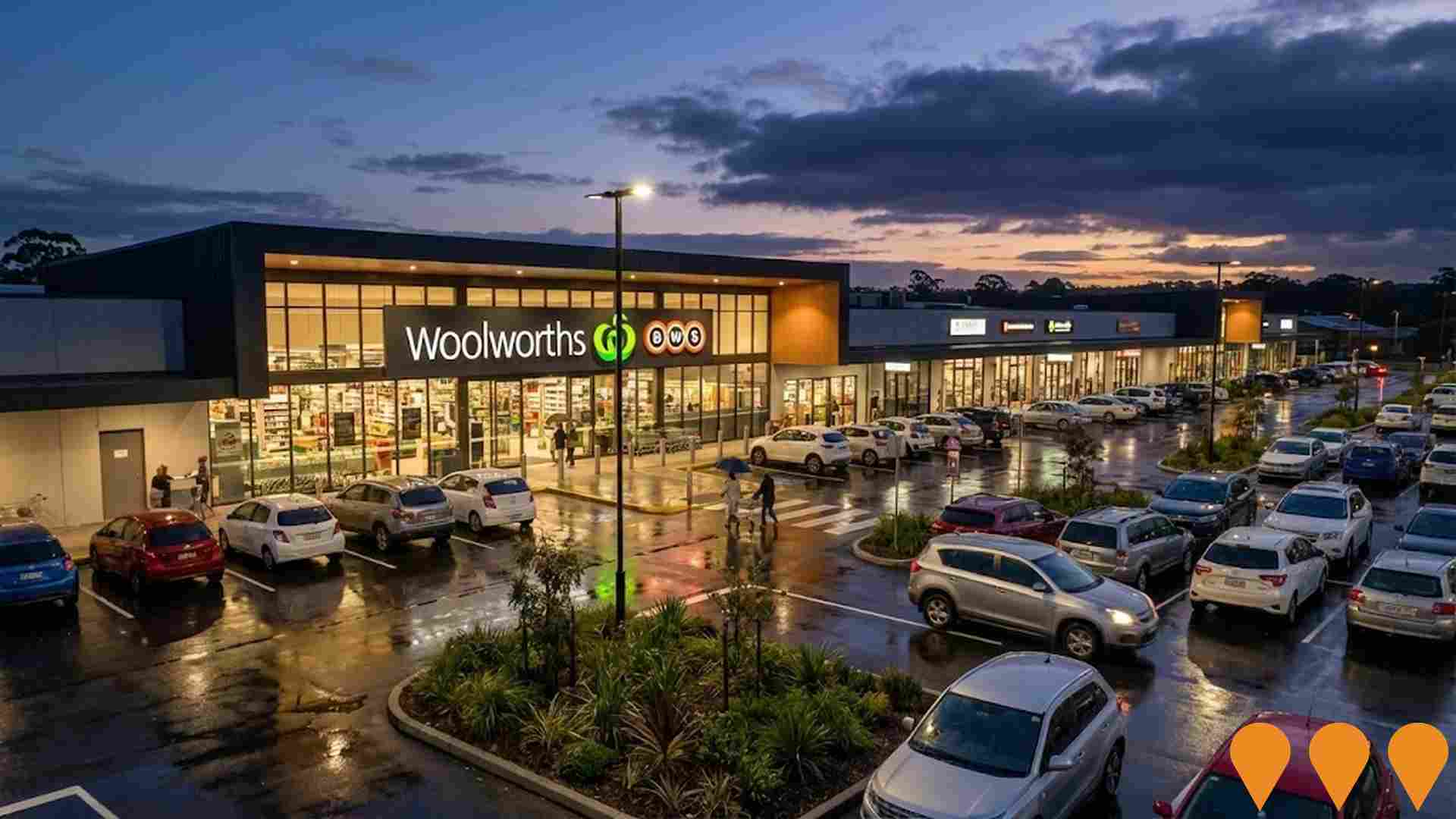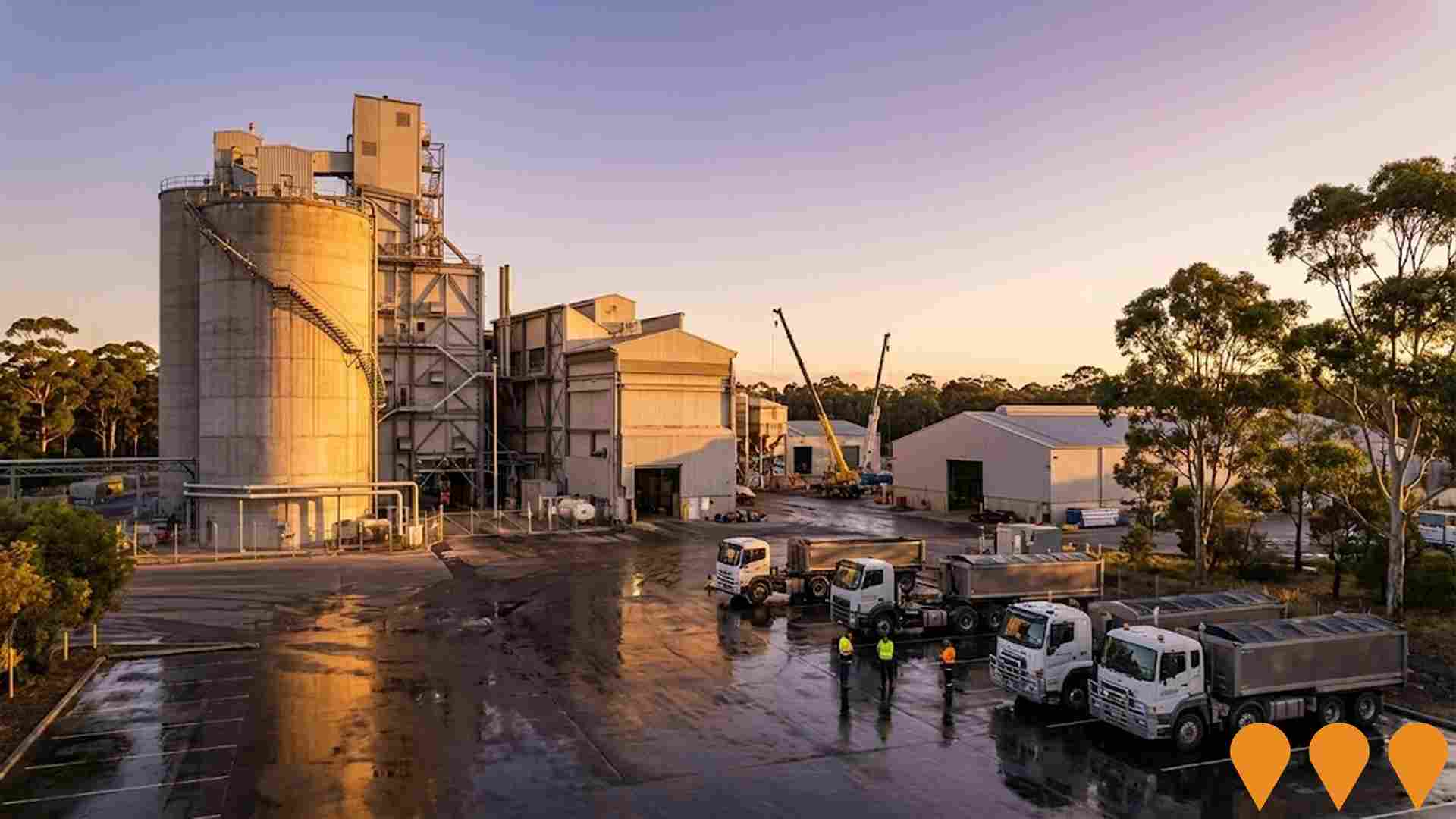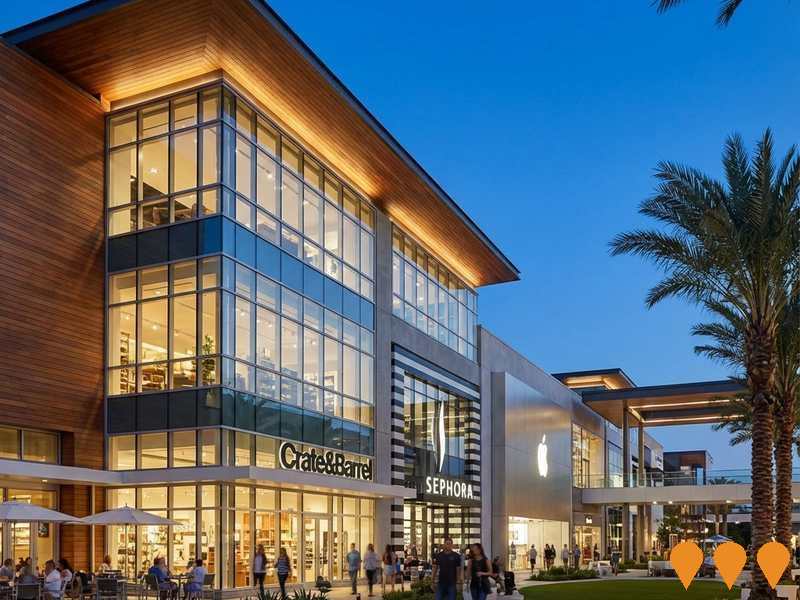Chart Color Schemes
est. as @ -- *
ABS ERP | -- people | --
2021 Census | -- people
Sales Activity
Curious about local property values? Filter the chart to assess the volume and appreciation (including resales) trends and regional comparisons, or scroll to the map below view this information at an individual property level.
Find a Recent Sale
Sales Detail
Population
Population growth drivers in Berry - Kangaroo Valley are strong compared to national averages based on AreaSearch's ranking of recent, and medium to long-term trends
Berry Kangaroo Valley's population was 9,489 as of Aug 2021. By Aug 2025, it had increased to around 9,512, a rise of 23 people (0.2%). This growth was inferred from the ABS estimated resident population of 9,414 in June 2024 and an additional 117 validated new addresses since Aug 2021. The population density as of Aug 2025 is approximately 17.7 persons per square kilometer. Overseas migration was the primary driver of this growth.
AreaSearch uses ABS/Geoscience Australia projections for SA2 areas, released in 2024 with a base year of 2022. For uncovered areas, NSW State Government's SA2 level projections from 2022 (base year 2021) are used. Growth rates by age group from these aggregations are applied to all areas for years 2032 to 2041. Based on the latest population numbers and demographic trends, Berry Kangaroo Valley is expected to increase by around 1,194 persons by 2041, a gain of approximately 11.5% over the 17-year period.
Frequently Asked Questions - Population
Development
Residential development activity is slightly higher than average within Berry - Kangaroo Valley when compared nationally
Kangaroo Valley has seen approximately 64 new homes approved annually. Over the past five financial years, from FY21 to FY25, around 323 homes were approved, with an additional 20 approved so far in FY26. On average, about 0.7 new residents per year have arrived for each new home over these five financial years, indicating that supply is meeting or exceeding demand and supporting potential population growth while providing greater buyer choice.
The average value of new homes being built is around $855,000, suggesting a focus on the premium segment with upmarket properties. This financial year has seen approximately $47.1 million in commercial approvals, indicating strong commercial development momentum. Compared to the rest of NSW, Kangaroo Valley maintains similar development levels per person, consistent with the broader area's market balance.
The new development primarily consists of detached houses (74.0%) and attached dwellings (26.0%), preserving the area's low-density nature while attracting space-seeking buyers. There are approximately 216 people per dwelling approval in the location. Future projections suggest that Kangaroo Valley will add around 1,092 residents by 2041. At current development rates, new housing supply should comfortably meet demand, providing good conditions for buyers and potentially supporting growth beyond current population projections.
Frequently Asked Questions - Development
Infrastructure
Berry - Kangaroo Valley has moderate levels of nearby infrastructure activity, ranking in the 44thth percentile nationally
Changes to local infrastructure significantly influence an area's performance. AreaSearch has identified 38 projects likely impacting the area. Key projects include Berry Lane, Planning and Heritage Investigations for Berry, Berry to Bomaderry Princes Highway Upgrade, and Foxground and Berry Bypass. The following list details those most relevant.
Professional plan users can use the search below to filter and access additional projects.
INFRASTRUCTURE SEARCH
 Denotes AI-based impression for illustrative purposes only, not to be taken as definitive under any circumstances. Please follow links and conduct other investigations from the project's source for actual imagery. Developers and project owners wishing us to use original imagery please Contact Us and we will do so.
Denotes AI-based impression for illustrative purposes only, not to be taken as definitive under any circumstances. Please follow links and conduct other investigations from the project's source for actual imagery. Developers and project owners wishing us to use original imagery please Contact Us and we will do so.
Frequently Asked Questions - Infrastructure
Moss Vale Road North Urban Release Area (Badagarang)
A 266-hectare master planned community in the new suburb of Badagarang, north of Nowra along Moss Vale Road between Bomaderry and Cambewarra Village, spanning the existing rural localities of Cambewarra and Meroo Meadow. Expected to deliver between 2,000 and 2,500 new homes (potentially up to 3,000) over the next decade, including a local shopping centre, diverse housing types, parks and open spaces, tree-lined boulevards, access to unique landscapes and views, and supporting road infrastructure including enhanced transport networks and active transport options. Infrastructure includes wastewater and water systems like sewer pumping stations, rising mains, water mains, and a new water reservoir at Cambewarra, as well as the Far North Collector Road network. The project has completed the Gateway determination process and draft Development Controls and Local Infrastructure Contributions Framework were exhibited in August-September 2024 to guide future development, with detailed planning expected to be completed by mid-2026 and housing delivery over the following decade.

The Yards, Bomaderry
A mixed-use development on an 8.2-hectare site delivering approximately 200 housing units including market, social, and affordable options from studios to four-bedroom homes, featuring a Village High Street with medical center, retail spaces, potential new Bowls Club, green spaces, and sustainable stormwater management.

Berry to Bomaderry Princes Highway Upgrade
The project upgraded approximately 10.5 kilometers of the Princes Highway to a four-lane divided highway, including overpasses, underpasses, protected turn bays, and fauna-friendly designs to improve safety, road capacity, traffic flow, and journey reliability.
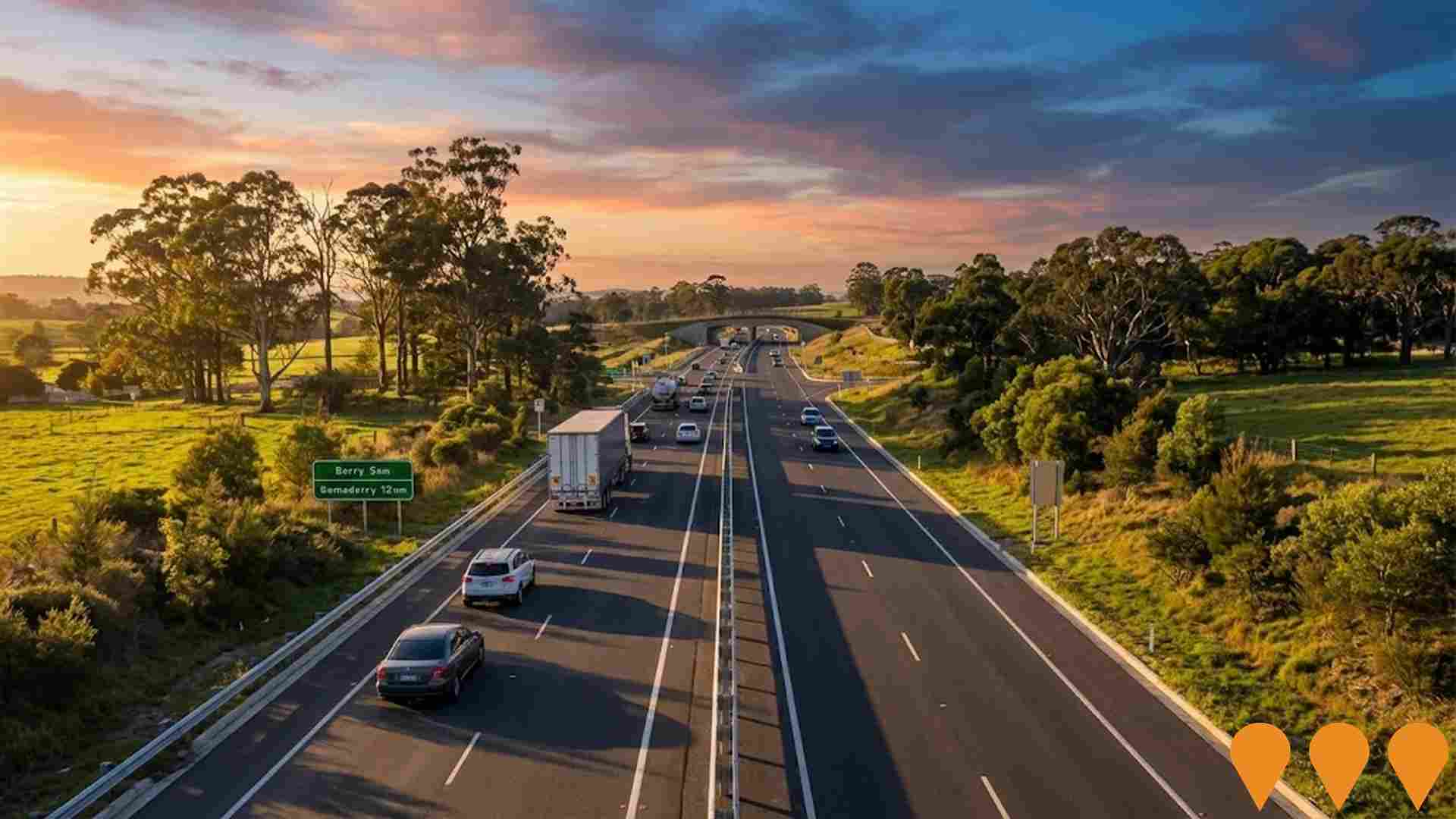
Shoalhaven Heads Master Plan
A town wide landscape and public domain master plan for Shoalhaven Heads, setting a long term framework for pathway networks, streetscapes, signage, town entrances and supporting infrastructure upgrades. Implementation is intended to be staged over time through Shoalhaven City Council capital works and grant funded projects.
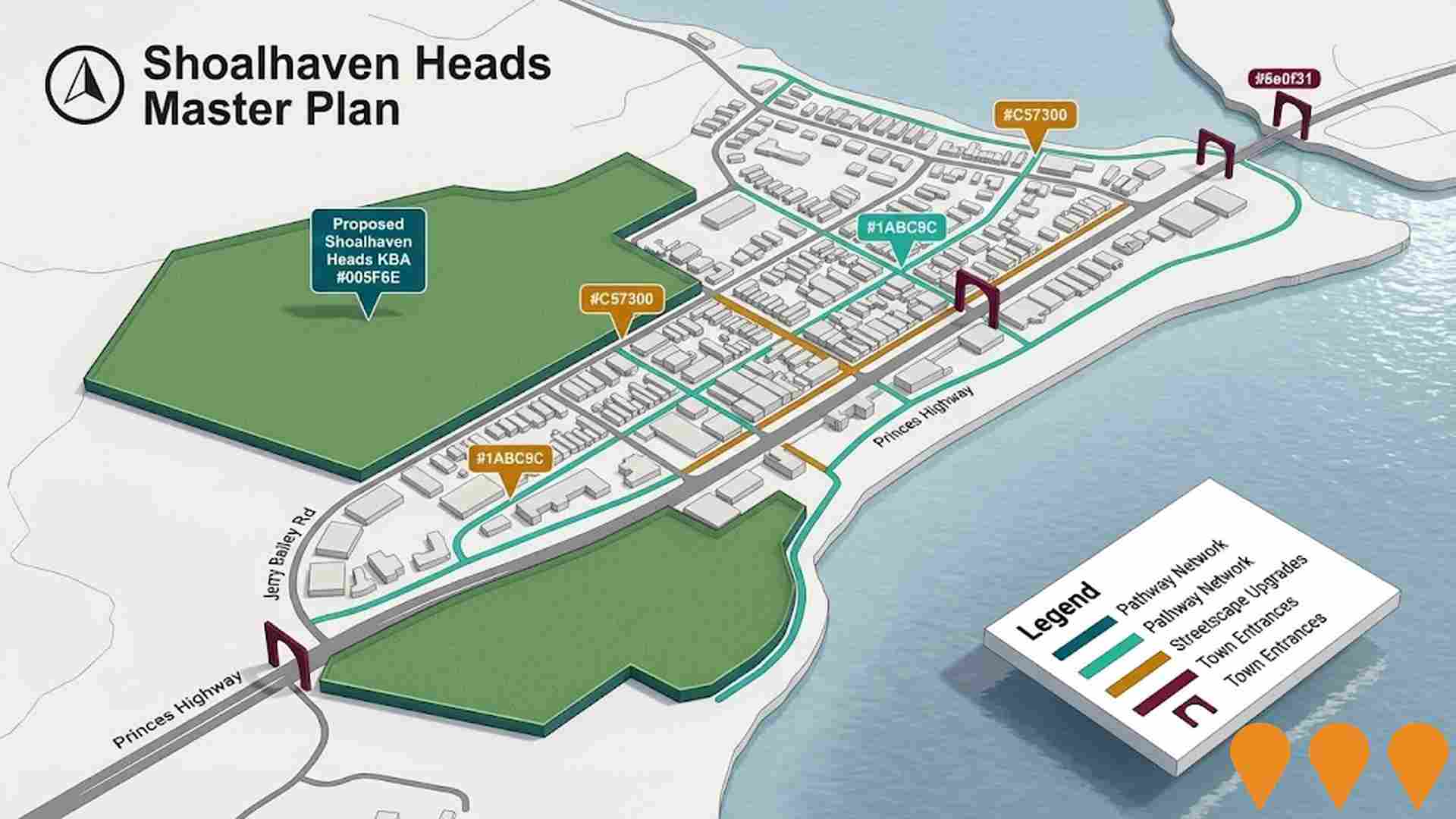
Bomaderry High School Upgrade
Major upgrade including new building with administration facilities and Technological and Applied Studies (TAS) workshops and classrooms, upgrade of existing kitchen to VET standard, and refurbishment of almost 50 existing classrooms and staffrooms.
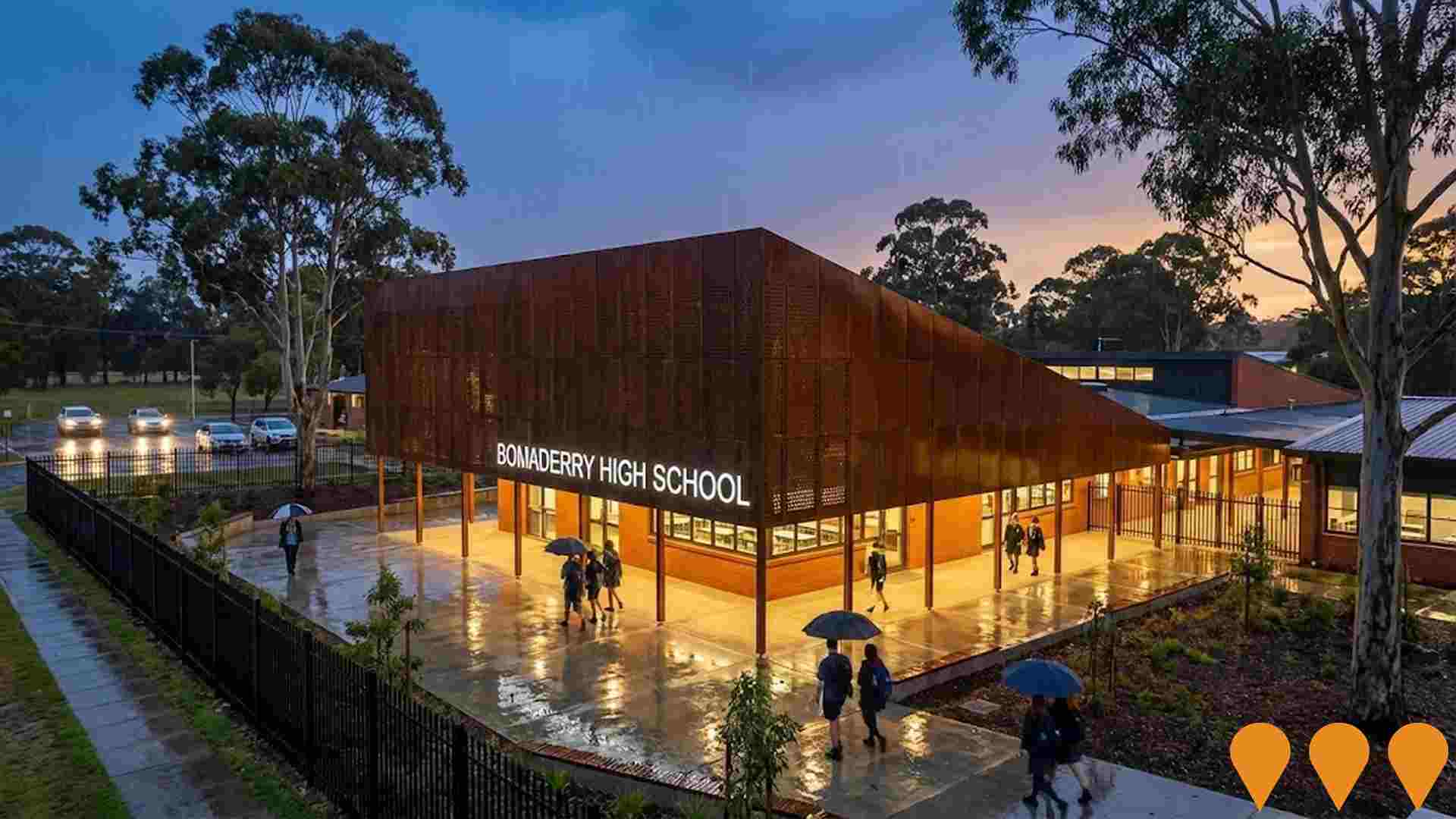
Landcom Bomaderry Build-to-Rent Apartments
60 build-to-rent apartments including at least 20% affordable rental housing in low-rise buildings. Construction started March 2025 by Zauner Construction, with residents expected to move in by late 2026. Demonstrates best practice design and sustainability.
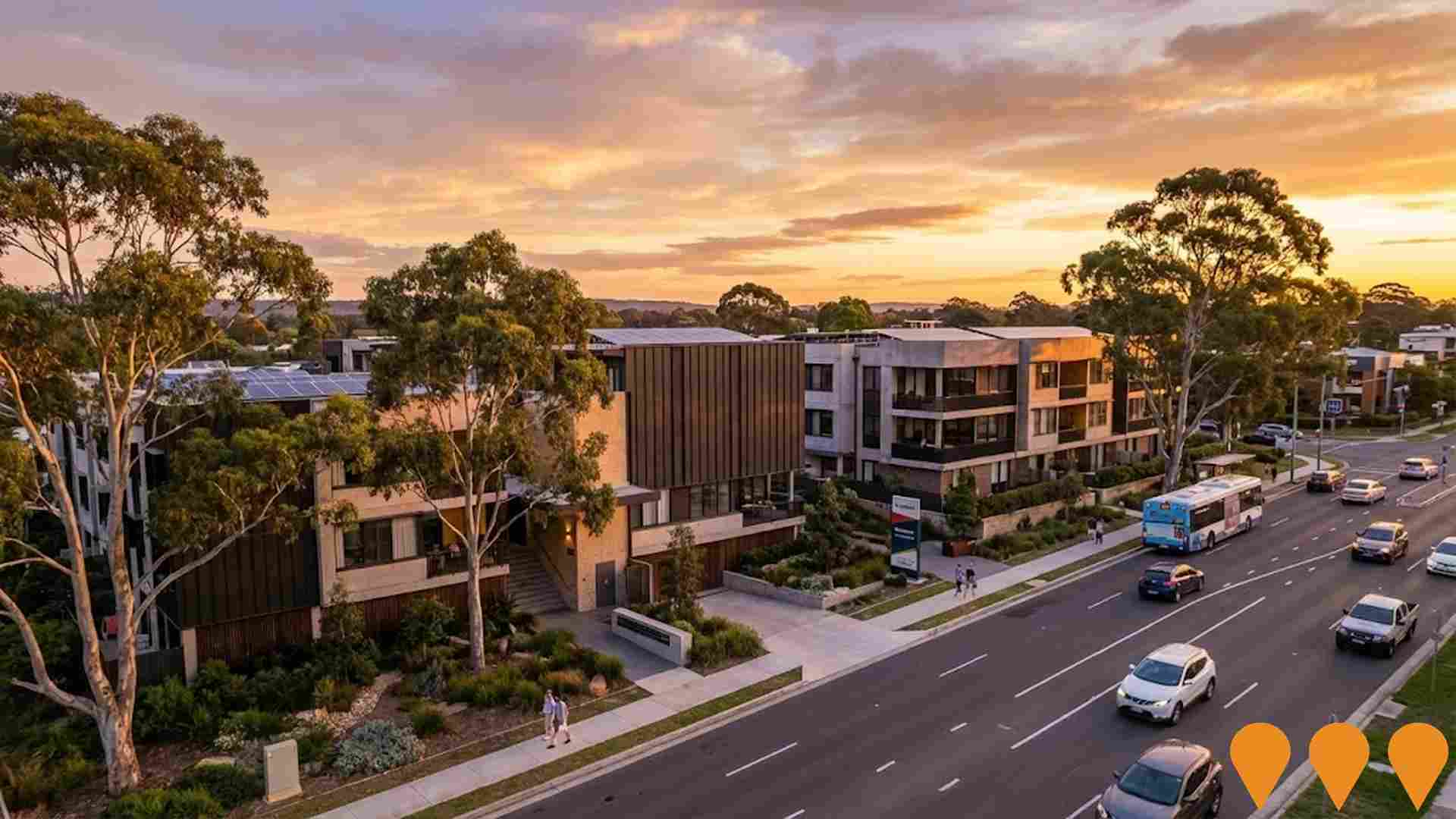
South Coast Line Rail Upgrade
13km of track upgraded to 25-tonne axle loading between Berry to Bomaderry and tunnels between Kiama and Berry. Enables heavier and longer rail freight services, supporting regional employment and NSW trade economy. Benefits Manildra Group operations and Port of Botany exports.

Berry Lane
Berry Lane is an exclusive 11 hectare masterplanned residential estate on Hitchcocks Lane and Huntingdale Park Road in Berry. Developed by New Horizon Properties, the project delivers 117 residential lots ranging from 360sqm to 1000sqm across five stages. The development received approval in December 2024 after over a decade of planning and represents the first major residential development in Berry in more than 10 years. Features wide landscaped streets, 250m of additional footpaths, green outlooks, and a mix of land-only and turnkey home and land packages within walking distance of Berry village. 18 lots already sold at an average price of $880,000.

Employment
The labour market strength in Berry - Kangaroo Valley positions it well ahead of most Australian regions
Kangaroo Valley's workforce is highly educated with a significant representation in essential services. The unemployment rate as of June 2025 was 0.9%, lower than the Rest of NSW's 3.7%.
Employment growth over the past year was estimated at 3.0%. As of June 2025, 3,972 residents were employed with a workforce participation rate of 48.4%, significantly lower than Rest of NSW's 56.4%. Key industries for employment among residents are health care & social assistance, construction, and education & training. The area has a particular specialization in professional & technical services, employing 1.6 times the regional level.
However, health care & social assistance employs only 14.8% of local workers, below Rest of NSW's 16.9%. Employment opportunities locally appear limited as indicated by Census data comparison. Between June 2024 and June 2025, employment levels increased by 3.0%, labour force grew by 2.6%, and unemployment fell by 0.4 percentage points. In contrast, Rest of NSW saw employment contract by 0.1% with a rise in unemployment by 0.4 percentage points. National employment forecasts from Jobs and Skills Australia, issued in May 2025, project national growth of 6.6% over five years and 13.7% over ten years. Applying these projections to Kangaroo Valley's employment mix suggests local growth of approximately 6.6%% over five years and 13.6% over ten years, although these are simple extrapolations for illustrative purposes only.
Frequently Asked Questions - Employment
Income
Income levels sit below national averages according to AreaSearch assessment
AreaSearch's latest postcode level ATO data for financial year ended June 2022 shows median income in Berry - Kangaroo Valley was $47,498 and average income was $73,571. This contrasts with Rest of NSW's figures of median income at $49,459 and average income at $62,998. Based on Wage Price Index growth of 12.61% from July 2022 to September 2025, estimated current incomes are approximately $53,487 (median) and $82,848 (average). Census 2021 income data shows Berry - Kangaroo Valley ranks modestly for household, family, and personal incomes, between the 31st to 34th percentiles. The earnings profile indicates that 26.9% of residents earn $1,500-$2,999 weekly, similar to metropolitan regions at 29.9%. After housing expenses, 86.4% of income remains for other expenses. Area's SEIFA income ranking places it in the 7th decile.
Frequently Asked Questions - Income
Housing
Berry - Kangaroo Valley is characterized by a predominantly suburban housing profile, with above-average rates of outright home ownership
In Berry - Kangaroo Valley, as per the latest Census evaluation, 83.1% of dwellings were houses, with the remaining 16.9% being semi-detached homes, apartments, or other dwelling types. This is compared to Non-Metro NSW's figures of 87.8% houses and 12.2% other dwellings. Home ownership in Berry - Kangaroo Valley stood at 58.3%, with mortgaged dwellings at 27.1% and rented ones at 14.6%. The median monthly mortgage repayment was $2,167, exceeding Non-Metro NSW's average of $1,733. The median weekly rent in the area was $400, compared to Non-Metro NSW's $350. Nationally, Berry - Kangaroo Valley's mortgage repayments were higher at $2,167 versus Australia's average of $1,863, and rents were also higher at $400 compared to the national figure of $375.
Frequently Asked Questions - Housing
Household Composition
Berry - Kangaroo Valley has a typical household mix, with a fairly typical median household size
Family households account for 70.1% of all households, including 21.4% composed of couples with children, 41.2% consisting of couples without children, and 6.9% made up of single parent families. Non-family households constitute the remaining 29.9%, with lone person households at 27.6% and group households comprising 2.1% of the total. The median household size is 2.3 people, which aligns with the average for the Rest of NSW.
Frequently Asked Questions - Households
Local Schools & Education
The educational profile of Berry - Kangaroo Valley exceeds national averages, with above-average qualification levels and academic performance metrics
Educational attainment in Berry-Kangaroo Valley is notably higher than broader benchmarks. Among residents aged 15 and above, 30.5% have university qualifications, compared to 19.0% in the SA3 area and 21.3% in the Rest of NSW. The majority of these are bachelor degrees (20.3%), followed by postgraduate qualifications (7.4%) and graduate diplomas (2.8%). Vocational credentials are also prevalent, with 38.2% of residents holding such qualifications, including advanced diplomas (13.2%) and certificates (25.0%).
A significant proportion of the population is actively pursuing education, with 22.9% engaged in formal learning. This includes 8.5% in primary education, 6.4% in secondary education, and 3.0% pursuing tertiary education. The area's four schools have a combined enrolment of 537 students, serving distinct age groups with three primary and one secondary school. However, local school capacity is limited at 5.7 places per 100 residents compared to the regional average of 12.8, leading many families to travel for schooling.
Frequently Asked Questions - Education
Schools Detail
Nearby Services & Amenities
Transport
Transport servicing is good compared to other areas nationally based on assessment of service frequency, route connectivity and accessibility
Berry-Kangaroo Valley has 265 active public transport stops offering a mix of train and bus services. These are served by 28 individual routes, facilitating 2,712 weekly passenger trips in total. Residents enjoy excellent transport accessibility, with an average distance of 124 meters to the nearest stop.
The service frequency averages 387 trips per day across all routes, translating to approximately 10 weekly trips per stop.
Frequently Asked Questions - Transport
Transport Stops Detail
Health
Health performance in Berry - Kangaroo Valley is well below average with prevalence of common health conditions notable across both younger and older age cohorts
Berry-Kangaroo Valley faces significant health challenges with notable prevalence of common conditions across all age groups. Approximately 56% (~5,326 people) have private health cover, higher than Rest of NSW's 49.3%.
The most prevalent conditions are arthritis (12.5%) and mental health issues (6.8%), while 62.3% report no medical ailments, compared to 59.4% in Rest of NSW. Residents aged 65 and over comprise 37.1% (3,527 people), higher than Rest of NSW's 27.8%. Despite this, health outcomes among seniors are strong, outperforming the general population in relevant metrics.
Frequently Asked Questions - Health
Cultural Diversity
Berry - Kangaroo Valley is considerably less culturally diverse than average when assessed alongside AreaSearch's national rankings for language and cultural background related metrics
Berry-Kangaroo Valley was found to have low cultural diversity, with 83.1% of its population born in Australia and 91.9% being citizens. English is the primary language spoken at home by 96.9%. Christianity is the predominant religion, practiced by 52.9%.
Judaism, however, is slightly overrepresented compared to the rest of NSW, with 0.2% of Berry-Kangaroo Valley's population identifying as such. In terms of ancestry, the top groups are English (35.2%), Australian (27.5%), and Irish (10.8%). Notably, Scottish, Welsh, and French ancestries are also overrepresented compared to regional averages: 9.9% vs 8.1%, 0.7% vs 0.6%, and 0.6% vs 0.4%, respectively.
Frequently Asked Questions - Diversity
Age
Berry - Kangaroo Valley ranks among the oldest 10% of areas nationwide
The median age in Berry-Kangaroo Valley is 56 years, notably higher than Rest of NSW's average of 43 years and Australia's 38 years. The 65-74 age group comprises 20.0% of the population compared to Rest of NSW's percentage, while the 25-34 cohort makes up 6.9%. This concentration in the 65-74 age group is significantly higher than Australia's national average of 9.4%. According to the 2021 Census, the 75 to 84 age group grew from 11.5% to 12.7%, and the 15 to 24 cohort increased from 7.1% to 8.2%. Conversely, the 55 to 64 cohort declined from 17.3% to 15.3%. By 2041, demographic projections indicate significant shifts in Berry-Kangaroo Valley's age structure. The 85+ cohort is projected to grow by 62%, adding 256 residents to reach a total of 668. However, population declines are projected for the 65-74 and 55-64 cohorts.

